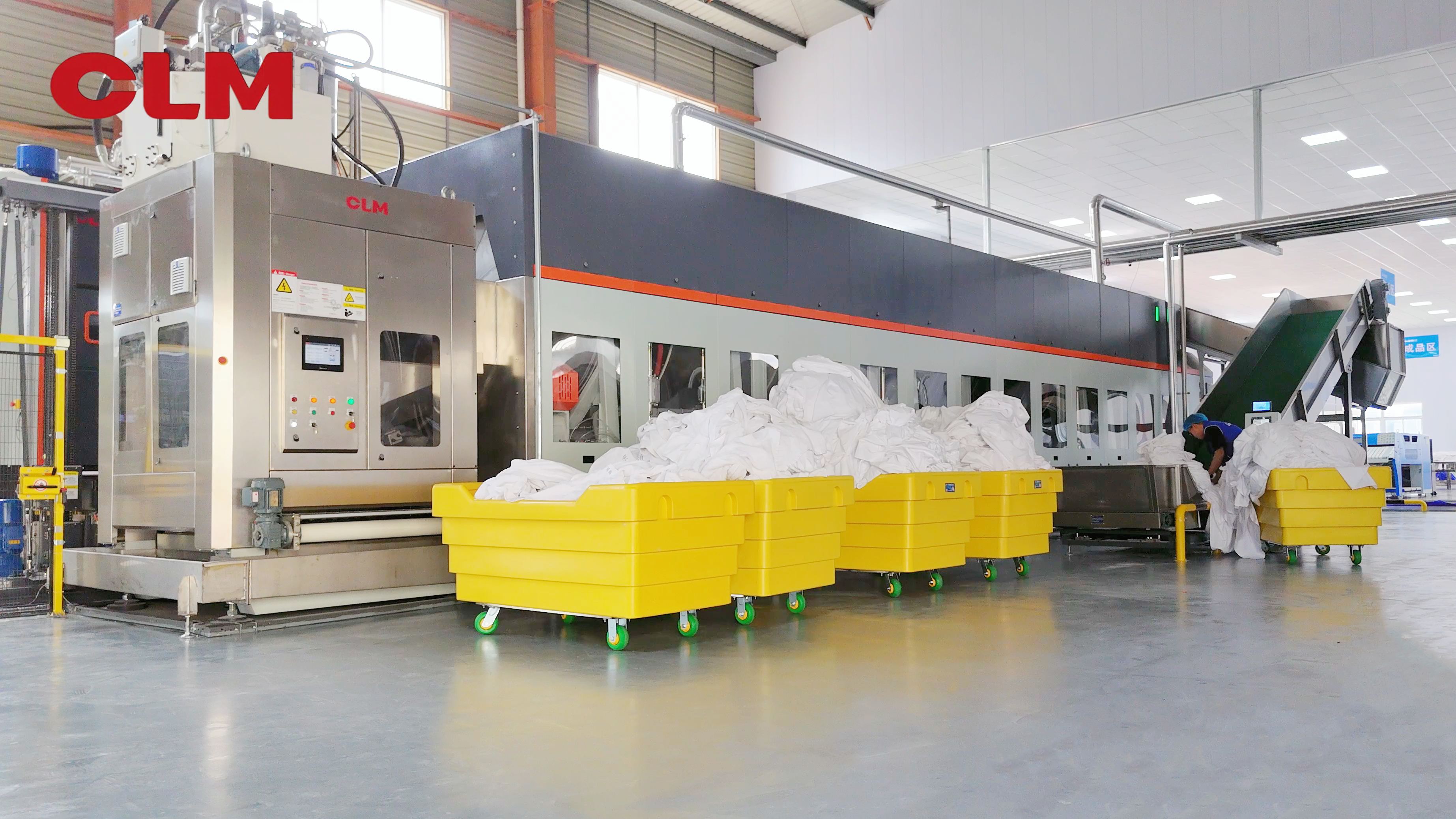According to statistics from the China Laundry Association, the average annual linen loss rate of laundry factories in China is as high as 8% to 15%, and direct economic loss accounts for more than 22% of the operating costs. This article deeply analyzes the core causes of linen loss and proposes solutions.
Chemical Damage (38%)
● Alkaline environment
When the pH value is greater than 10, the strength of cotton fibers decreases by 17%/ cycle. (Gulf Coast test data)
● Chlorine residue corrosion
A free chlorine concentration greater than 50 ppm leads to a 23% attenuation in the breaking strength of fibers. (ISO 10528 standard)
Mechanical Force Damage (45%)
Mechanical force damage often happens in the washing, drying, and transportation processes. For example, if there are small bumps, foreign objects, or burrs on the inner side of the tunnel washer, the suction air tunnel of the spreading feeder, the linen contact surfaces of the spreading feeders, ironers, and folders, linen cages and transportation shuttle carts, etc., the linen will be scratched or abraded.
● Pressure
If the pressing programs of the water extraction press are not suitable or the washing water level is too high so that the linen overflows the fence during the pressing process, these will all cause contusion and laceration of the linen.
● Wear of the Transmission System
The surfaces that come into direct contact with linen, such as the inner drum of an industrial washing machine or a tunnel washer, or the steel buckle of a conveyor belt, if they have burrs, can cause a 1.2-3.5cm tear during washing.
● Equipment overload
Experimental data shows that when the loading volume exceeds 15% of the upper limit, the linen loss rate increases to 2.3 times the normal value.
Management Loopholes (5%)
● Sorting error causes metal foreign bodies with a probability of 0.7‰
● Transportation defects lead to an average of 1.8 snags per trip.
The above are the three common reasons for linen damage. These problems can all be changed through more meticulous management and standardized washing operation procedures. The next article will introduce how to prevent these problems.
Post time: Jun-17-2025


